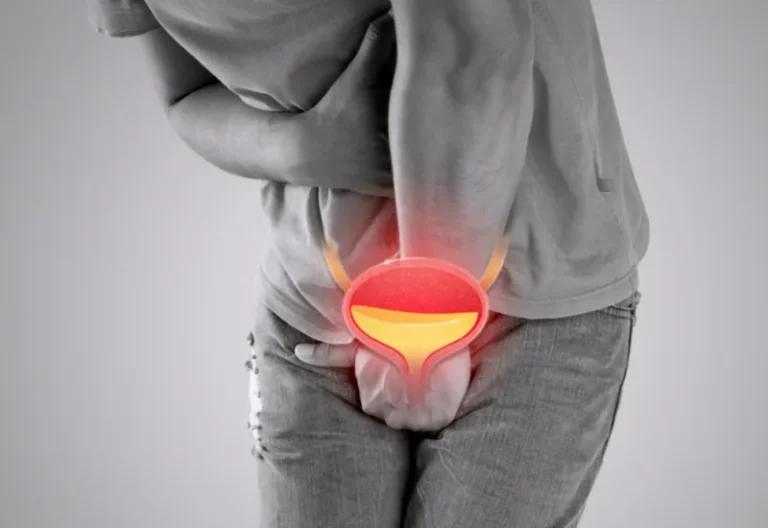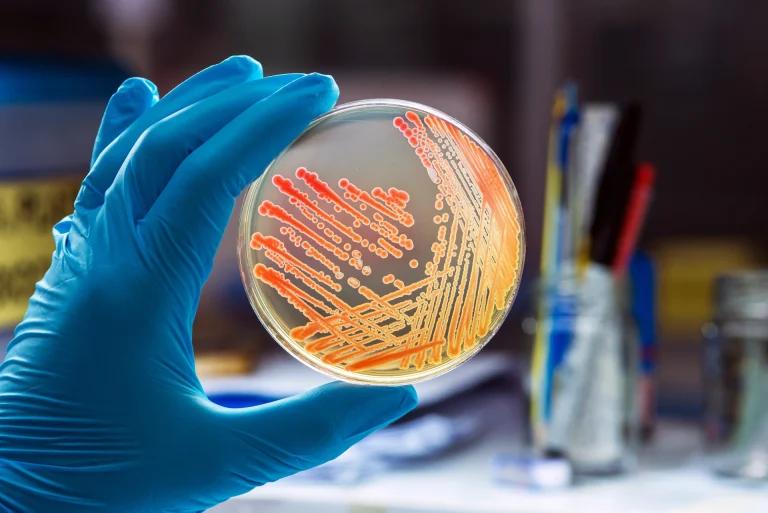Bladder infections are the most common type of urinary tract infection (UTI) affecting the urinary system. Cystitis is the name of infections that affect the bladder caused by E. coli, which is the bacteria responsible for over 90% of bladder infections. Bacteria can enter the urinary tract through the urethra, making their way up to the bladder, or in more severe cases travel even further causing kidney infections. In this guide we will explore treatment options and preventive measures to ensure you stay healthy and infection free.
📝 Symptoms of a UTI
Lower UTIs
Infections of the bladder (cystitis) or urethra (tube that carries urine out of the body) are known as lower UTIs. These can cause symptoms such as frequent urination, pain or burning when peeing and lower abdomen pain.
📝 How can I get rid of a bladder infection?
Antibiotic treatment is usually the first treatment for urinary tract infections. Your health care provider may select an antibiotic based on the type of bacteria causing your infection. Your health, any underlying medical conditions and the type of bacteria found in your urine sample determine which medicine is used and how long you need to take it.
Antibiotics
Antibiotics are the first choice for simple UTI infections. Drugs commonly used are:
- Nitrofurantoin
- Trimethoprim
- Fosfomycin
- Cephalexin
- Ceftriaxone
If you have a complicated UTI, you could take ciprofloxacin which is part of a group of antibiotics called fluoroquinolones. Often UTI symptoms clear up within a few days of starting treatment, but you may be advised to continue antibiotics for a week or more.
The length of a course of antibiotic treatment depends on:
- How severe your infection is
- Whether you have repeat infections
- Whether you have problems with your urinary tract
For an uncomplicated UTI that occurs when you’re otherwise healthy, your health care provider may recommend a shorter course of treatment. That may mean taking an antibiotic for 1 to 3 days.
Always take the prescribed dose and complete the duration of treatment advised by your healthcare provider.
If you have recurrent UTIs, your health care provider may recommend:
- Low-dose antibiotics for six months or longer
- Diagnosing and treating yourself when symptoms occur, so you can start a course of antibiotics at the first sign of a UTI
- Taking a single dose of antibiotic after sex if UTIs are related to sexual activity
- Vaginal estrogen therapy if you’ve reached menopause
Pain relievers
Your health care provider may also prescribe over-the-counter painkillers such as ibuprofen or acetaminophen/paracetamol to relieve pain caused by a UTI.
📝 Lifestyle changes
The following lifestyle changes can help prevent urinary tract infections:
- Proper hygiene: Wiping from front to back after using the bathroom and keeping the genital area clean and dry can help reduce the risk of bacterial infections
- Increased fluid intake: Drink plenty of water to flush out bacteria from the urinary tract and to prevent infections
- Urinating after sexual activity: This can help eliminate any bacteria that may have been introduced
- Try a different type of contraception: The use of spermicides (including condoms treated with spermicide) and diaphragms as contraceptives also may increase the risk of UTIs. Try non-spermicidal lube or a different type of contraception
- Avoiding irritants: Avoid using scented feminine products, douches and certain birth control methods, to help maintain a healthy urinary tract environment
- Wear loose-fitting clothing: Wearing cotton underwear is also helpful as cotton allows more airflow than synthetic materials. Loose-fitting clothes can also help as they don’t trap moisture. Some health care professionals think that too much moisture increases the risk of infection
🏡 Home remedies
There’s not enough scientific evidence behind home remedies, but they are something to possibly consider. Always speak to a healthcare professional before taking home remedies and supplements as they may interact with other medications.
Cranberry juice
The reason cranberries are thought to be special is because they contain a compound called A-type proanthocyanidins (PACs). This is thought to prevent bacteria from sticking to the bladder wall. Scientists also think cranberries make urine more acidic, making it a less friendly environment for bacteria like Escherichia coli to multiply and thrive in.
Some research has been conducted on the use of cranberry juice or supplements as a treatment of UTIs. However the results are mixed. Some studies have shown that cranberry juice may help reduce the incidence of UTIs, other studies however have found no significant results. There is some evidence that cranberry products can dangerously increase the potency of warfarin, a prescription medication used to prevent blood clots.
D-mannose
It is thought that D-mannose works in a similar way to cranberries by binding to the bladder wall so that bacteria can’t stick to it. Studies are more promising and are in progress to prove whether this will work and at what dose. Currently it’s too early to say for sure.
Probiotics
Probiotics occur naturally in some types of food, including certain yoghurts, kombucha or kefir. They are thought to be a way to build up the healthy bacteria that may have been killed during a course of treatment. It is thought that probiotics may be better at preventing harmful bacteria from attaching to the urinary tract cells, rather than treating a UTI.
📝 Conclusion
Bladder infections are uncomfortable, inconvenient and you may even feel embarrassed if you have symptoms that affect your genitals or cause incontinence. The good news is they’re treatable. If you’ve tried a home remedy that didn’t work the next step is to see your doctor. This condition is easily solved with antibiotic treatment and completing the full course to ensure the UTI goes away.
Sources
- Urinary tract infection (UTI) – NHS inform
- Urinary tract infections (UTIs) – NHS
- Treatment for Bladder Infection in Adults – NIDDK
- Urinary Tract Infection (UTI): Causes, Symptoms & Treatment
Medical Disclaimer
NowPatient has taken all reasonable steps to ensure that all material is factually accurate, complete, and current. However, the knowledge and experience of a qualified healthcare professional should always be sought after instead of using the information on this page. Before taking any drug, you should always speak to your doctor or another qualified healthcare provider.
The information provided here about medications is subject to change and is not meant to include all uses, precautions, warnings, directions, drug interactions, allergic reactions, or negative effects. The absence of warnings or other information for a particular medication does not imply that the medication or medication combination is appropriate for all patients or for all possible purposes.








